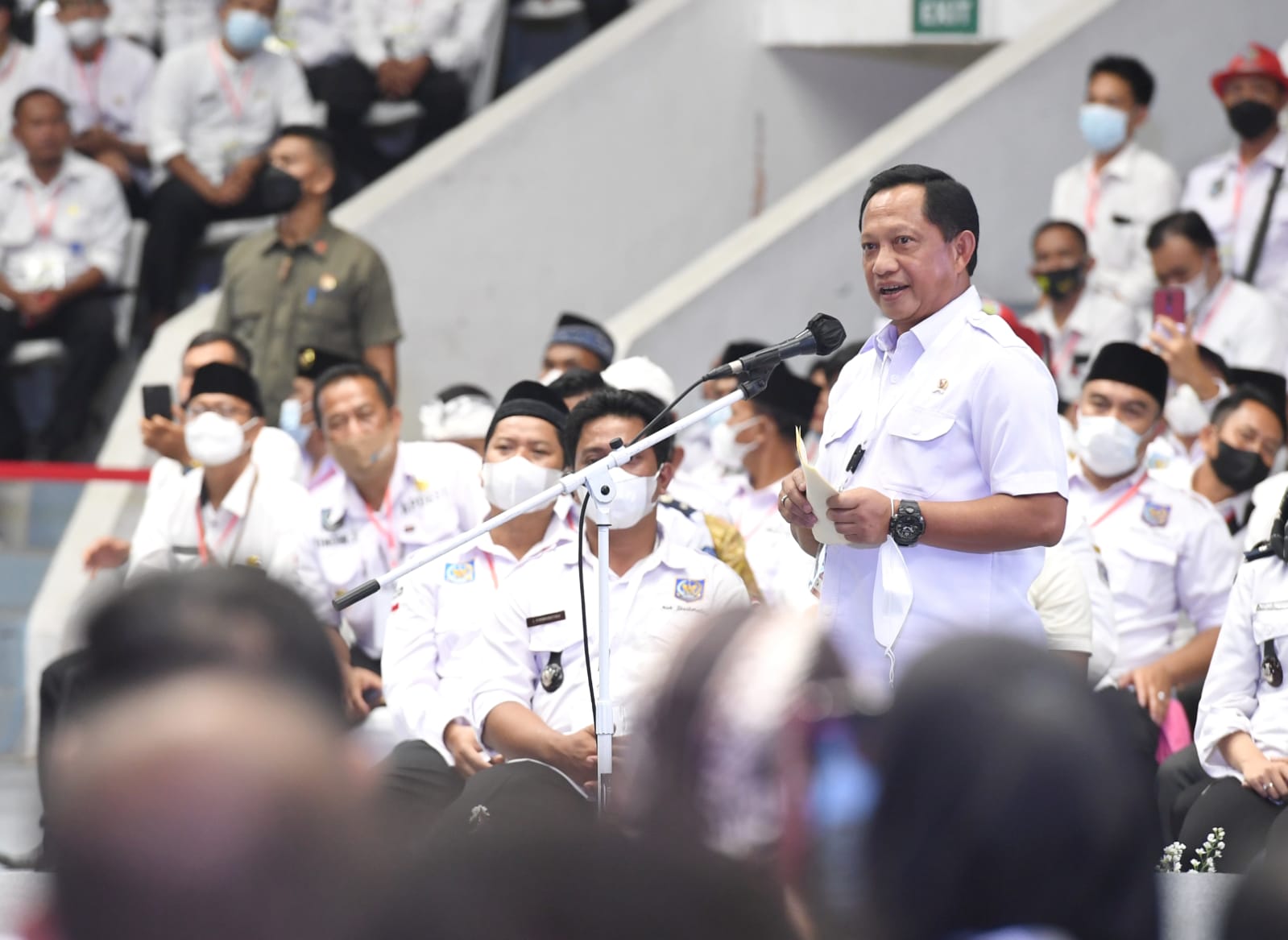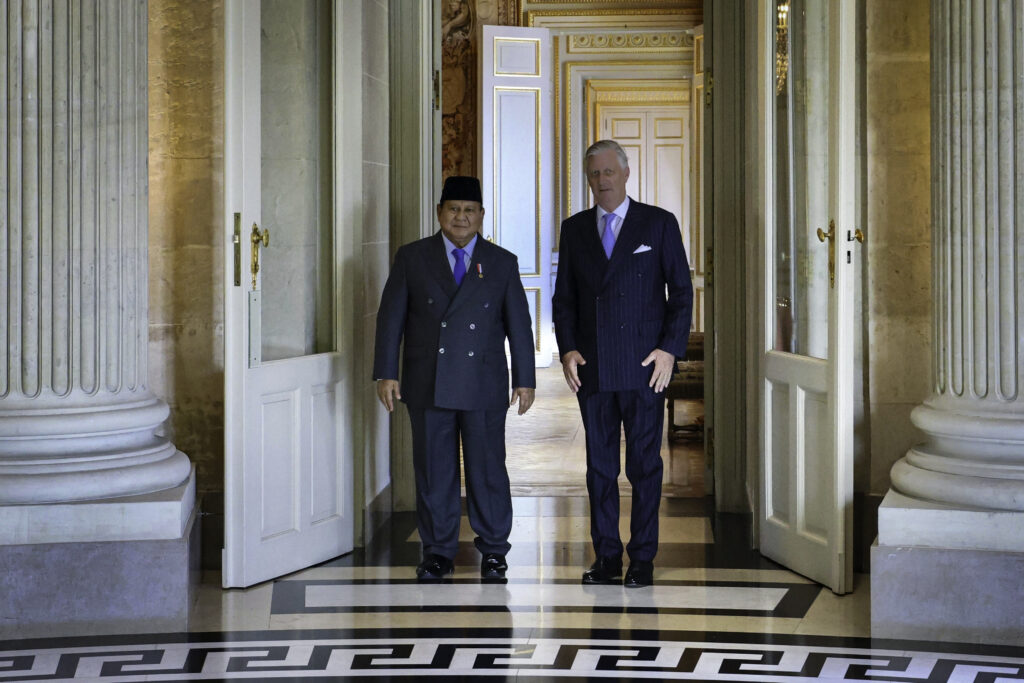Gov’t to Bolster Village Development, Home Minister Says

Minister of Home Affairs Tito Karnavian on the 2022 APDESI National Meeting in Jakarta, Tuesday (03/29). (Photo by: BPMI of Presidential Secretariat/Lukas)
The Government continues to strive for equitable development throughout Indonesia by fostering development in villages, according to Minister of Home Affairs Tito Karnavian.
The measure constitutes one of the Nawacita (nine key programs) of President Joko “Jokowi” Widodo’s administration, namely to build the country from the periphery by strengthening border areas and villages within the framework of a unitary state.
“The President has taken concrete steps to realize the spirit of equitable development by strengthening development at the village level,” the Minister said at the Opening of the 2022 National Meeting of the Association of Indonesian Village Governments (APDESI Silatnas 2022) at Istora Senayan in Jakarta, Tuesday (03/29).
The development in Indonesia, Tito continued, which has been concentrated in urban areas (urban-oriented development) has affected urbanization that causes the development in rural areas to be left behind. To that end, the Government has changed its paradigm to strengthen the development in rural areas.
One of the Government’s strategies to realize equitable development is by implementing Law Number 6 of 2014 on Village aimed to improve welfare of the village communities, adding that, the formation of Ministry of Villages, Development of Disadvantaged Regions, and Transmigration is one of the law implementations, according to the Minister.
“By forming the Ministry, it represents the Government’s focus to improve the village development,” Tito added.
For the record, the Government has distributed Village Funds to support the acceleration of village development. Total Village Funds allocated by the Government from 2015 until 2021 was about Rp400.65 trillion, while the allocation for 2022 is Rp68 trillion.
“[The allocation] is the Government’s great concern for 74,961 villages that are expected to improve services to village communities, reduce inequality between villages and cities, and create new economic centers that are not only urban-oriented, but rural-oriented,” Tito said.
On that occasion, Tito also said the realization of the Village Funds is used for infrastructure construction, including village roads, bridges, markets, irrigations, as well as creating Village-Owned Enterprises.
“In the aspect on the improvement of village communities’ life quality, 29,210 units of sports facilities, 1,307,403 units of clean water facilities, 473,884 unit of water sanitation facilities have been built. Other facilities that are no less important also have been built, including 14,041 units of village’s maternity huts, 45-kilometers drainage systems, 6,430 schools for early childhood education (PAUD), more than 42,000 integrated health services posts, and more than 74,000 wells,” he added.
Tito further said that the village development has resulted in a decrease in poverty rate in villages. The report from Statistics Indonesia (BPS) shows that at the end of 2021, the poverty rate in villages was recorded at 14.64 million people, while in 2014 the poverty rate reached 17.37 million people, he added.
Based on a report from Ministry of Villages, Development of Disadvantaged Regions, and Transmigration, he continued, the number of Independent Villages (Desa Mandiri) has reached 3,269 villages. Previously, in 2016, the number of Independent Villages was only 174 villages.
Independent Village, Tito said, means that the village does not rely on how much the fund transfer from the Central Government. The village has its own revenues.
Furthermore, the number of Developed Villages (Desa Maju) has increased to 15,321 villages from 3,600 villages, while the number of Developing Villages (Desa Berkembang) has increased to 38,083 villages from 22,963 villages.








